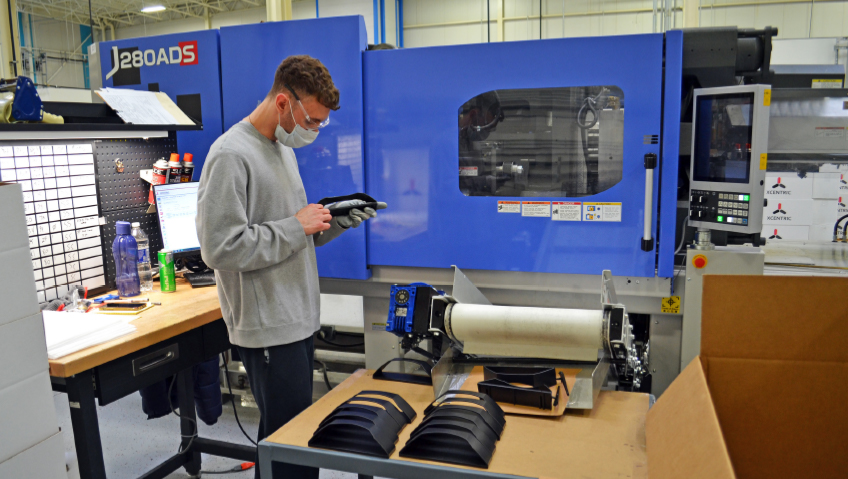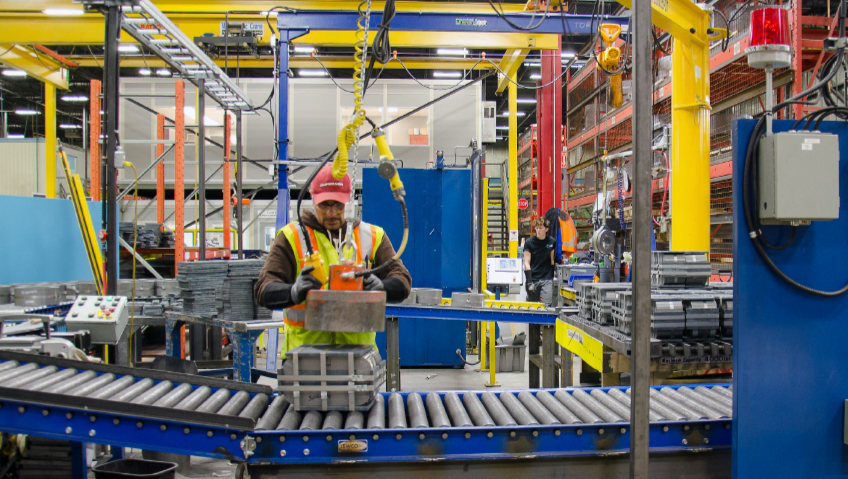Office work is so 2019.
The global pandemic has forever changed how we live and how we work, signaling the end of office centricity as companies shift to a permanent work-from-home culture.
Certainly, there has long been remote work using the internet as a connection to a central office. And now the office of the future will be a digital hub connecting remote workers.
Gone are the days of long commutes, expensive downtown office real estate and water cooler gossip. In fact, many remote workers were already spending more time off-site well before COVID. Forbes reports that 31 percent were doing so all the time or almost all the time in 2016 versus 24 percent in 2012.
“People are more productive working at home than people would have expected. Some people thought that everything was just going to fall apart, and it hasn’t. And a lot of people are actually saying that they’re more productive now,” says Mark Zuckerberg, CEO of Facebook.
Based on internal employee surveys, he says that remote workers could make up 50 percent of the Facebook workforce in the next five to 10 years.
Another fact driving this change is the job market reality, with over 50 percent of office workers saying they were actively seeking employment offering flexible work-from-home options.
The banking industry is one that is out in front of the trend, leading the way from dedicated office space and glitzy office towers. Banks are updating their virtual capabilities to electronically service clients, with remote employees providing customer service. So when you call in for help with your credit card, you’re likely talking to someone set up at home, multi-tasking with laundry duty.
While banks and tech giants such as Facebook, Shopify and Twitter have generous telecommuting policies in place for staffers, the public sector is also rapidly moving in this direction and, surprisingly, so is manufacturing.
So, how are workers adapting to the changing working conditions?
Forbes reports that 56 percent of bank employees rate the transition to at-home-work as positive, with the public sector not far behind at 53 percent and manufacturing at 37 percent. Manufacturing jobs are difficult to transition to work-from-home scenarios, but remote-operated robotics are changing operations, and roles such as human resources, finance, sales and marketing are shifting to offsite work.
Health care, embroiled in the frontline battle with the pandemic, is also moving toward off-site work with jobs in finance, personnel and executive staff leading the trend. Patient care has also been impacted by the work-from-home model, with many health care services offering enhanced telehealth and video-call options.
The question is: are employees who work from home more productive?
Stanford University economics professor Nicholas Bloom is convinced that is the case and conducted a robust experiment to demonstrate this fact.
Bloom and his research team took a group of 1,000 employees who volunteered to participate in the study. They separated the volunteers by birth dates: even-numbered birthday celebrants got to work from home four out of five weekdays, while those with odd-numbered birthdays continued to work from the office. The workers in this experiment had repetitive, easy to track tasks that could be easily quantified and compared so the productivity could be readily measured.
This research continued for nine months and the outcomes demonstrated that at-home-workers were 13 percent more productive. The results surprised the researchers who also discovered that 4 percent of that 13 percent productivity increase came from workers being able to complete more tasks per minute because of fewer interruptions. The remaining 9 percent of the productivity increase came from more minutes worked per shift because of lack of commuting time, shorter lunch breaks and fewer sick days.
Of note, participants in the experiment had to meet a couple of key requirements. They had to have no children living at home, their office had to be a room that was not a bedroom and they had to have access to quality broadband.
Now, it’s not only research projects that are promoting work-from-home. “Now that companies have built the framework – and experienced the cost and time savings associated with it – there’s no real reason to turn back,” says Mark Lobosco, Vice President of Talent Solutions at LinkedIn.
Working from home does come with its drawbacks, of course. Critics of work-from-home cite a loss of camaraderie and office culture, a loss of creativity, a higher likelihood of work-related stress and a reduction in career opportunities. Working from home also blurs the work and home boundaries, and workers can find it hard to switch off, complaining of feeling overworked due to a loss of visibility with managers and the perceived pressure to appear busy and deliver higher levels of productivity. And women reportedly experience the most difficulties from balancing work and home priorities, given that women take on most of the responsibilities for unpaid childcare and household upkeep.
Even with these challenges, however, more and more companies are trending to offer work-from-home options for employees, and many businesses are flourishing while adapting to the changing work and home behavior of consumers.
“As we’ve moved to virtual work, we haven’t just coped, we’ve actually thrived,” said Suresh Kumar, Chief Technology Officer at Walmart, in an internal memo from May of 2020.
“We are more focused on the things that have the greatest impact for our customers, associates and the business,” Kumar said to his team. “We are making quicker decisions and acting. Meetings are now more inclusive of people regardless of location, level or other differences. We have great momentum and need to figure out how to carry it forward.”
With so many people working from home, corporate IT has struggled with security, making cybersecurity a major business growth area. Many businesses are investing in cybersecurity to help protect company data, computers and phones.
The work-from-home reality has also changed how people shop. E-commerce sales in the United States increased 40 percent year-over-year as of August 2020. Post-pandemic, economists anticipate that the convenience of online shopping will remain a reality and traditional retail will need to adapt to offer expanded online options.
Fast food companies have also prospered because of the greater number of employees working remotely. These companies have quickly adapted to changing consumer behavior by creating ordering apps, contactless pick-up and home delivered meals. Sales reported from Uber Eats doubled in the second half of 2020 and, like home shopping, changing consumer work habits are expected to maintain this growth.
Companies offering at home connected fitness have also increased in popularity with many gyms being shuttered by the pandemic and at home workers looking to maintain their levels of fitness. And with limited leisure activities available because of the pandemic health restrictions, computer gaming has boomed, with sales up 23 percent from the year previous. Gaming is not likely to continue to grow at this rate as some workers return to traditional office space, but the bar has been raised and consumer entertainment habits have been altered with more time at home and away from the office environment.
And, of course, remote software work applications have also benefitted from more work-from-home activity. Video chat platforms, instant messaging and other collaboration software platforms have become mainstream as at home workers need to connect with remote colleagues. Post-pandemic, some workers will return to the office, but many will continue to work remotely and these platforms will continue to grow and evolve.
One difference: people will expect to see professional haircuts on those Zoom calls going forward as salons and barbers reopen.
What will corporate ladder climbing and office networking look like by 2025? Much different, so get ready.
“The future we envision for work allows for infinite virtual workspaces that will unlock social and economic opportunities for people regardless of barriers like physical location,” says Andrew Bosworth, Facebook Reality Labs Vice President. “It will take time to get there, and we continue to build toward this.”






